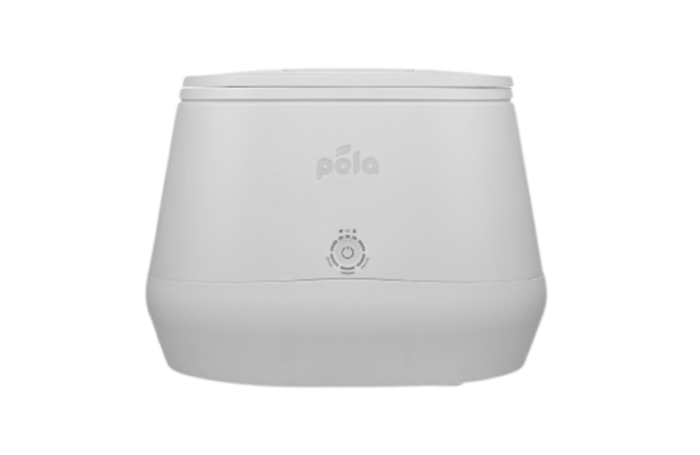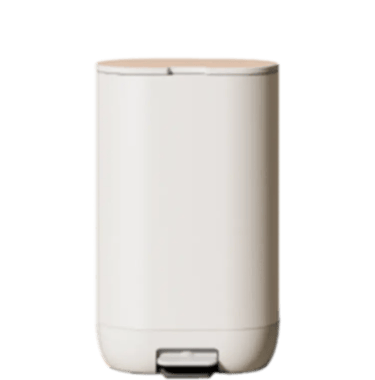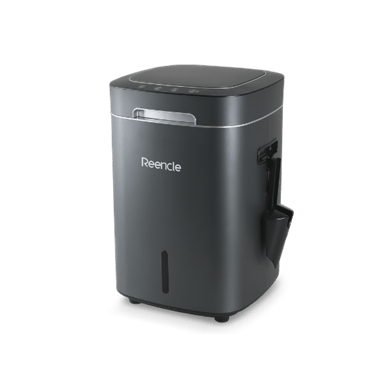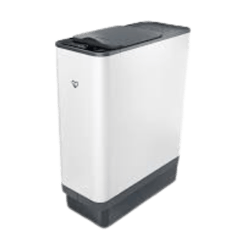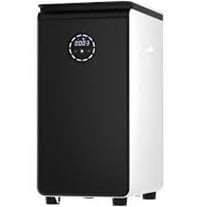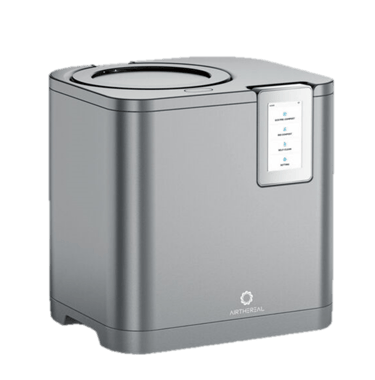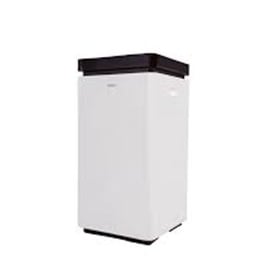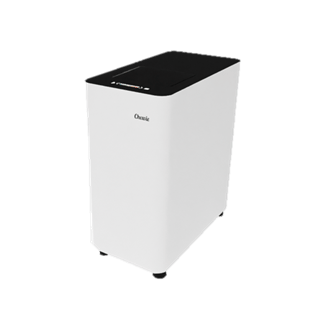SOLD OUT! - CHEWIE FOUNDERS 1000 - BATCH II
The Leading Smart Composters 2025: The Ultimate Guide to Effortless Kitchen Hygiene
For India’s luxury convenience seekers and tech-savvy eco-warriors who want the cleanest kitchen, the smallest footprint, and the smartest home on the block.
Rushali Mariam & Dinesh Babu Sukumar
7/21/202510 min read
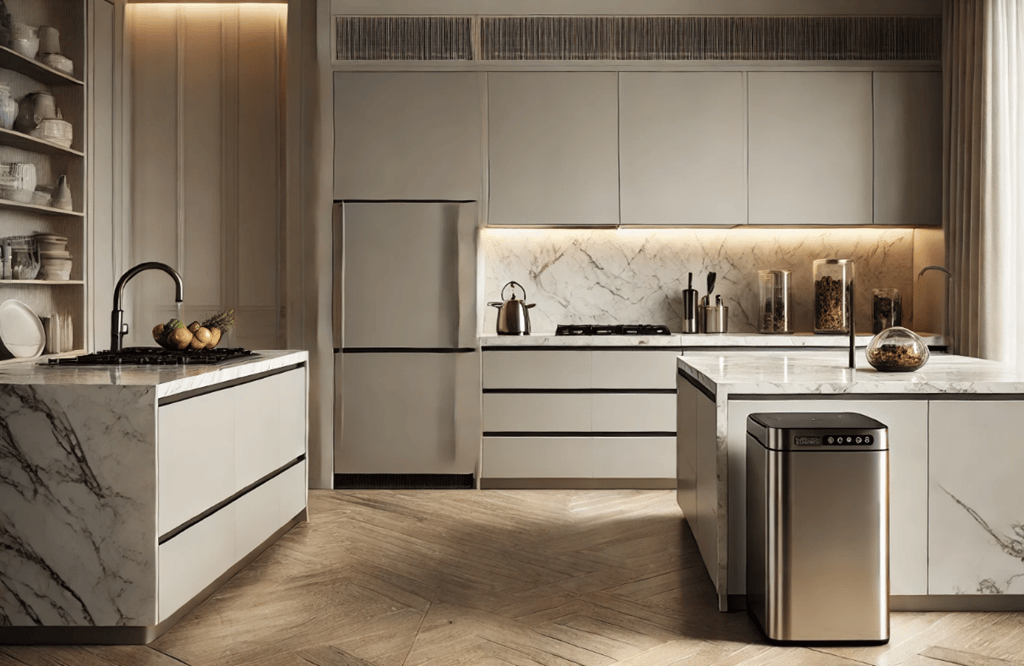

Why Wet Waste Is the Real Villain in Our Homes
Let’s be honest—wet waste is the most revolting form of household garbage. It leaks, it stinks, and it turns your dustbin into a biohazard overnight. And yet, it is the one thing most of us produce in abundance.
Globally, more than half of household waste is organic, yet most still ends up in dumps. Countries like the United States, South Korea, Spain, and members of the European Union are stepping up policy efforts to divert organic waste from landfills through composting mandates, source segregation, and food waste bans. India, by contrast, generates over 1,70,000 tonnes of waste every day, with more than 60% being organic wet waste. What’s worse? Most of it ends up in landfills, where it rots anaerobically, releasing methane, a major contributor to climate change.
While dry waste gets the spotlight with elaborate recycling systems, wet waste quietly rots in black bags under kitchen sinks. The most effective way to tackle this? Composting at the source. Household‑scale electric and smart composters are emerging as a practical, urban‑friendly tool to intercept food scraps at source-cutting hauling, odor, and emissions while giving homeowners visible sustainability wins.
For Indian metros- dense housing, heat, and frequent wet waste overflow, an automated in‑kitchen solution is less “nice to have” and more hygiene insurance. In this guide, we are diving into the leading composters available in India, including international disruptors and Indian innovators. They are all built for one purpose: to help you stop wet waste before it starts to rot.
Managing Wet Waste at Home Is Non-Negotiable
If you’ve ever delayed taking out the trash for just one extra night, you’ve seen what wet waste can do. It’s the villain in your bin, and it is filling up India’s landfills way too fast.
By composting at the source, you reduce landfill burden, lower emissions, and keep your home and conscience clean.
For India’s affluent early adopters, this is an opportunity to get ahead of future segregation norms while enjoying a cleaner kitchen now. And with modern technology, even the busiest households can do their part without lifting a finger.
Related: Invisible Dangers: Improperly Managed Wet Waste
How to Choose the Right Solution for You?
The best way to deal with wet waste? Handle it where it starts- at home. Composting at the source not only eliminates the need for centralized waste processing but also reduces the carbon footprint of transporting food scraps across cities, piling them up in already overwhelmed landfills.
When short‑listing a smart composter, ignore the marketing gloss and evaluate against these practical filters:
Feed Style: Continuous vs Batch
Does the unit allow you to add scraps anytime (continuous), or must you wait for one cycle to finish (batch)? For Indian households that cook multiple meals daily, a continuous system offers far greater flexibility and convenience.Output Type: What It Really Produces
Is the output fully composted, semi-processed “pre-compost,” or a usable soil amendment like regenerated soil? Your intended use, whether for potted plants, gardens, or municipal pickup, should guide your choice here.Input Flexibility: What It Can Handle
Can it process cooked food, oil, dairy, meat, and bones? Many composters have strict input rules that don’t align with Indian cooking styles. A truly practical machine should handle your everyday kitchen waste without fuss.Automation & Maintenance Needs
Does it require you to add bio-additives, change filters frequently, or clean the bin daily? Look for systems that minimize manual intervention which is especially important in busy households with limited time.Capacity vs Household Size
A compact 2–5L unit may work for singles or couples, but larger families, especially those with hired help preparing multiple meals, will need higher-capacity or continuous-feed models to keep up.Odor & Pest Control
Features like sealed lids, multi-stage filtration, and automatic dehydration or aeration are crucial in preventing foul smells and deterring pests—especially important in India’s humid climate.Total Cost of Ownership
Don’t stop at the upfront price. Factor in ongoing expenses like electricity, additive packs, filter replacements, and any optional pickup services. A low-maintenance unit with minimal consumables may prove more economical in the long run.
These filters aren’t just technical specs- they directly impact how well a composter will work in your home, with your food habits, your time, and your budget.
But here’s the catch: the best method is the one you’ll actually commit to.
If you’re someone who enjoys the ritual of turning compost, monitoring the pile, and watching nature do its thing, then traditional composters available in India like Daily Dump, TrustBin, or the Bokashi Compost Kit may be your perfect fit.
On the other hand, if you live a fast-paced life or simply want your wet waste gone without ever seeing it or smelling it again, you’ll likely gravitate toward tech-enabled solutions like Chewie.
While not a composter in the traditional sense, Chewie is a wet waste management device powered by AI and rapid digestion technology. Designed to operate continuously and silently, it digests household food waste without odour, layering, turning, or leachate trays. Built with Indian kitchens in mind, it handles everything from dal and rasam to khichdi and even tougher scraps like chicken bone. Just load it, forget it, and empty the tray of nutrient-rich Regen Soil once a month. For those who want the benefits of composting at the source without the mess or time commitment, Chewie makes it effortless.
So, whether your heart lies with soil-filled terracotta towers or sleek, sensor-driven machines, the message remains the same: take control of your wet waste at the source. Because how you compost matters less than whether you do it at all.
Meet the Leaders: What Sets Each Apart
A stylish countertop composter that simplifies daily food scrap disposal with multiple modes and a compact design.
Type: Batch-based, multi-mode electric composter with odor control
Why It Wins: Compact and easy to use with tailored modes for speed, soil readiness, and select bioplastics; effective odor filtration
Best For: Apartment dwellers and eco-conscious individuals with light to moderate daily waste looking for convenience and clean aesthetics
Lomi
The Mill
A smart bin that transforms food waste into shelf-stable grounds for upcycling, without requiring users to compost themselves.
Type: Large-capacity, subscription-based electric dehydrator
Why It Wins: Handles all food types, requires minimal effort, and closes the loop by converting waste into animal feed
Best For: Sustainability-focused households that don’t garden but want a hassle-free, zero-waste solution with high capacity
Reencle Prime
A microbe-powered composter that uses living cultures to digest food scraps and produce rich, plant-ready compost right at home.
Type: Continuous aerobic digester with live microbe culture
Why It Wins: Low noise, effective odor control, and produces active compost ideal for home gardens.
Best For: Eco-conscious users comfortable with light maintenance in exchange for natural compost.
Soilkind
A European-made composter that blends form and function to deliver near-natural compost in just 48 hours.
Type: Batch-based smart aerobic composter with inbuilt shredding
Why It Wins: Produces ready-to-use compost fast, with elegant design and a more authentic composting process
Best For: Style-conscious, sustainability-driven users seeking real compost with minimal visual compromise
Geme
A microbial composter designed for larger households, using tech to speed up decomposition.
Type: Large microbial composter with 19L capacity
Why It Wins: Handles bigger waste volumes than typical countertop units; faster breakdown using proprietary Kobold microbes
Best For: Large households with heavy daily waste, best for early adopters comfortable navigating limited third-party validation
Airthereal Revive R800
A compact kitchen composter with smart features for smaller households getting started with food waste reduction.
Type: Batch-based electric dehydrator with app control
Why It Wins: Budget-friendly, space-saving, and easy to use with remote scheduling
Best For: Small apartments or beginners looking for a simple, entry-level composter
Vitamix / FoodCycler FC‑50
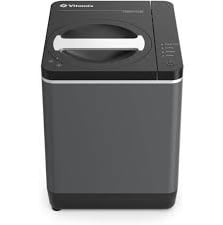

An efficient dehydrator that's earned trust in municipal pilots for reducing household food waste with minimal effort.
Type: Batch-based electric dehydrator and grinder
Why It Wins: Simple to use, odor-controlled, and proven to reduce landfill waste despite small size
Best For: Individuals or couples in small homes wanting a no-fuss, proven solution for basic food scraps
Oklin GG-02
A heavy-duty home composter from a commercial-grade brand which is ideal for serious users or shared living environments with high daily waste.
Type: Large-capacity microbe composter
Why It Wins: Processes far more than typical units, suitable for joint families or semi-commercial use
Best For: Large households, residential communities, or eco-conscious kitchens with high daily food waste
Vego Kitchen Composter
A quiet countertop composter made for modern kitchens and gardening enthusiasts, balancing tech and usability.
Type: Multi-mode smart electric composter with app
Why It Wins: Continuous loading, odor control, and tailored modes with soil-friendly output
Best For: Home growers and smart appliance lovers seeking more automation and garden-ready results
A premium, AI-powered wet waste composter built specifically for Indian kitchens—effortless, hygienic, and designed to blend into upscale homes.
Type: Continuous, fully automatic wet waste management device
Why It Wins: Handles all food types, requires no manual input, controls odor, and produces nutrient-rich Regen Soil
Best For: Urban households and tech enthusiasts seeking a low-maintenance, elegant sustainability solution.
The 2025 Smart Composter Comparison Table
How to read: “Continuous” = add scraps anytime. “Batch” = must finish cycle before adding more. “Handles All Foods” = manufacturer or product data indicates tolerance for mixed diets, incl. meat/dairy/bones; always check the manual. Capacities are rounded household‑level guidance (real‑world loads vary).
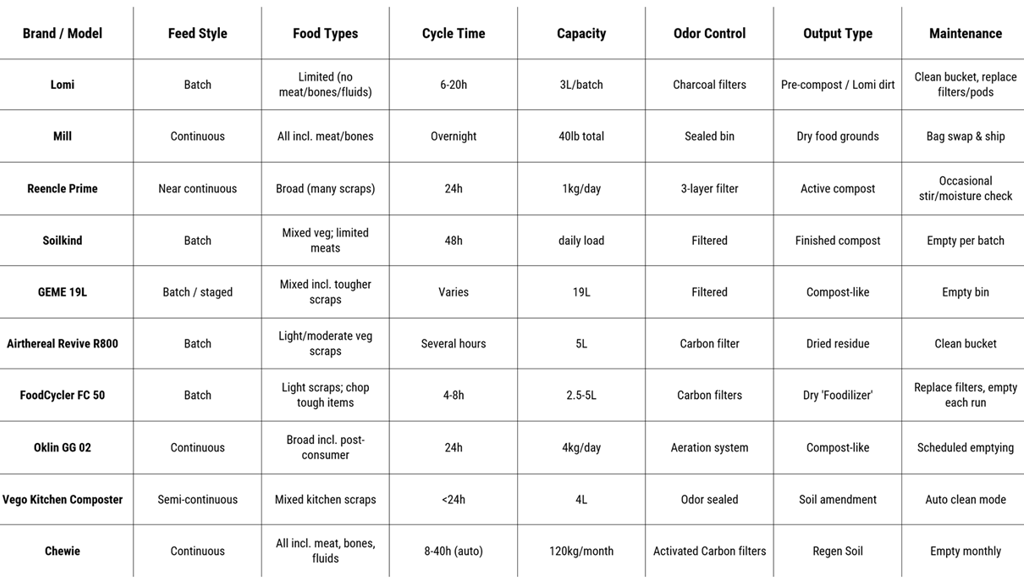

Output Reality Check: “Is It Really Compost?”
A common industry question in the composting appliance space lies in how food waste is processed: many electric composters rely on drying and grinding, some use biological digestion, and a few combine both. Dried output is typically odourless and shelf-stable, making it convenient for indoor use. However, it often needs to be mixed with soil or cured outdoors before being heavily applied to plants. When used directly in pots, this output can sometimes cause mold or salt buildup.
Biological systems, on the other hand, can produce more active, nutrient-rich compost, but they require more hands-on care, such as maintaining moisture levels and supporting the microbial culture.
That being said, the nature of the compost only really matters if you’re planning to use it in your garden or for potted plants. For most people choosing a composter simply to reduce kitchen waste and odor without dealing with leaky bins or daily disposal, any system that fits their routine and space can be a meaningful step towards health and wellbeing and sustainability. The right fit depends more on your lifestyle than soil.
Energy, Cost & Footprint
Most countertop composters use ~0.8–1.7 kWh per cycle, depending on load size and mode- modest on your electricity bill, but something to consider if used daily.
Key cost factors include:
Unit Price: Ranges from under ₹20,000 for budget models to ₹40,000+ (excluding customs) for premium imports.
Consumables: Some units need regular refills like filters, microbe packs, or additive pods.
Subscriptions: A few models charge monthly fees for services like waste pickup.
Incentives: In some countries, local governments offer subsidies to promote adoption and reduce landfill loads- an idea that is being picked up by various countries.
Small costs can add up over time, so it’s worth checking long-term ownership expenses- not just the upfront price.
Sustainability Impact: Does It Actually Help?
Absolutely, and in more ways than one. From the moment wet waste leaves your kitchen, every step it takes - to the community bin, the sorting station, and finally the landfill - adds to its carbon footprint through fuel‑hungry trucks and other logistics. Once buried, that organic waste decomposes without oxygen, releasing methane, a greenhouse gas over 80 times more potent than CO₂ in the short term. Composting at the source, right in your kitchen, slashes these emissions. Whether your choice of appliance transforms scraps into garden‑ready compost or diverts them to be repurposed as animal feed, you’re cutting off waste at the root.
But the impact isn’t just planetary; it is also deeply personal. With the right composter, you no longer have to deal with leaky bins, unpleasant smells, or daily waste runs. It makes kitchen cleanup quicker, more hygienic, and surprisingly satisfying. Families find that they waste less food, become more aware of what they consume, and start engaging with sustainability in a tangible way.
On a community level, source-level composting reduces the burden on local waste collection systems, frees up landfill space, and lowers the carbon footprint of hauling garbage across cities. For governments and municipalities, widespread adoption of home composters can mean lower waste management costs, fewer emissions, and better public health outcomes.
All this from a simple shift in habit: dropping your food scraps into a wet waste management device instead of a trash can. It’s the kind of small, everyday action that quietly scales into a ripple effect- with real, measurable environmental wins.
Final Word: Your Waste, Your Way
Wet waste isn’t glamorous. But it doesn’t have to be disgusting either. Whether you crave a fully automated, AI‑tuned digestion chamber, a stylish countertop lifestyle gadget, a circular pickup program, or a microbe ecosystem you can nurture, you’re doing it right.
Because the real failure isn’t choosing the wrong composter - it’s doing nothing at all. So, whatever you do, don’t let your wet waste go to waste.
Start with one kitchen. Watch the trash shrink. Feel the difference in your home’s air. Your guests notice. So does the planet.
Chewie by Mankomb
Support
E: social@mankomb.com
M: 9739243943 (9am-5pm)
Connect
Connect. Follow. Stay connected
Copyright © 2025 | Mankomb Technologies | All Rights Reserved

